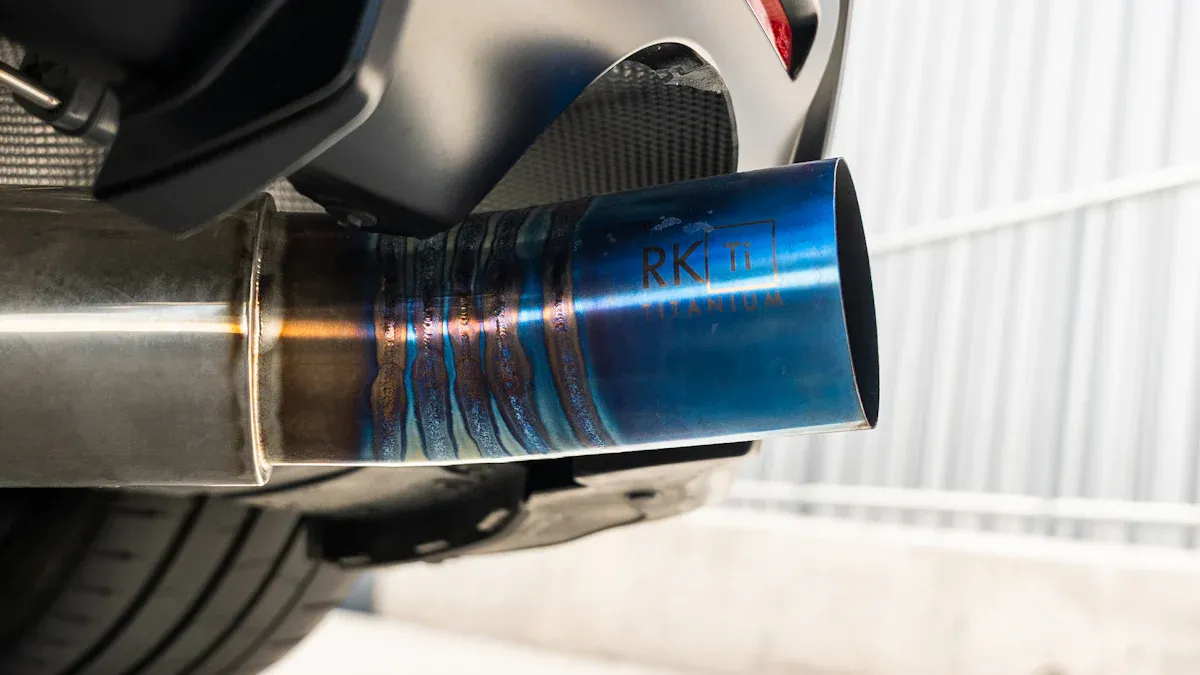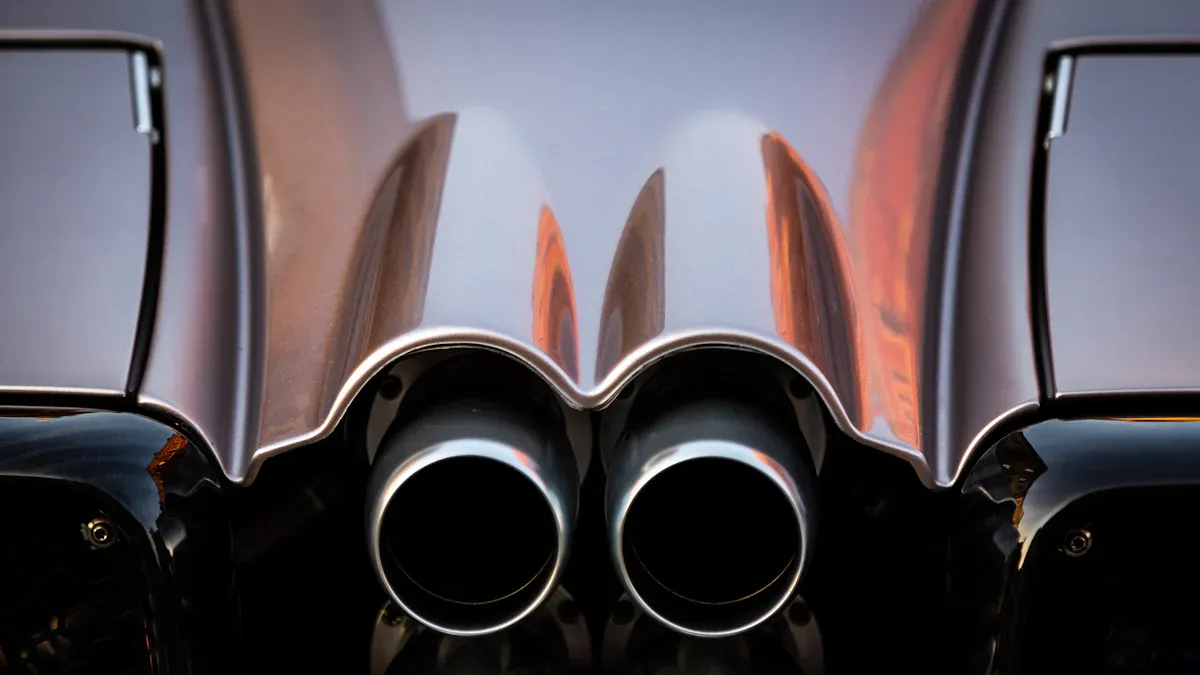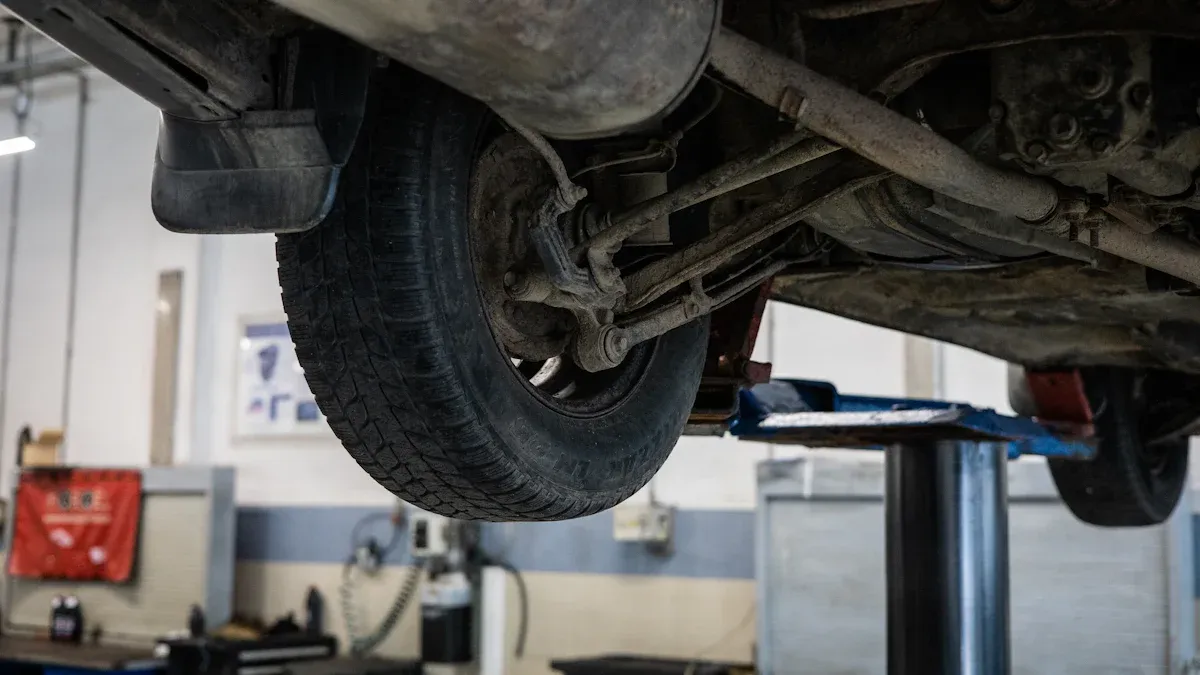
You want confidence when choosing exhaust solutions. Recent studies show Flexible Exhaust Pipe designs deliver higher efficiency than traditional systems. Flexible technology, including applications like Turbocharger Pipe assemblies, increases output power and adapts to complex automotive demands. Reliable data supports your decisions with measurable gains in durability and compliance.
Key Takeaways
- Flexible exhaust pipes offer better durability, vibration control, and corrosion resistance than traditional pipes, backed by reliable data.
- Standardized lab tests combined with real-world data give a full picture of flexible pipe performance, helping you trust product quality.
- Using data helps global distributors make smart choices, ensure quality, and meet strict regulations for long-term success.
Flexible Exhaust Pipe Performance Metrics

Durability
You expect your exhaust system to last under tough conditions. Manufacturers measure durability using several key metrics.
- Dimensional accuracy ensures each Flexible Exhaust Pipe fits perfectly and maintains flow capacity.
- Pressure resistance tests confirm the pipe can handle high internal pressures without leaks.
- Fatigue life measures how many cycles the pipe endures before failure, showing long-term reliability.
- Material quality checks guarantee the use of strong metals like stainless steel, which resist wear and tear.
Flexibility
Flexible Exhaust Pipe designs outperform rigid pipes in flexibility and vibration absorption.
| Feature | Flexible Exhaust Pipes | Rigid Exhaust Pipes |
|---|---|---|
| Flexibility | Highly flexible and elastic | Limited flexibility |
| Vibration Absorption | Excellent at absorbing vibrations | Minimal vibration absorption |
| Weight | Lightweight and easy to install | Heavier due to metal construction |
You benefit from easier installation and improved vibration control, which protects sensitive components.
Corrosion Resistance
Stainless steel Flexible Exhaust Pipe assemblies resist corrosion in harsh environments. The chromium oxide layer on stainless steel protects against rust and pitting, even with exposure to road salt or exhaust condensate. Thicker wall hoses last longer, especially in aggressive conditions.
Noise Reduction
- Flexible Exhaust Pipe designs absorb engine vibrations before they reach the cabin.
- Corrugated and braided structures dampen noise, creating a quieter driving experience.
- Proper installation improves comfort by reducing knocking sounds and sudden bursts of exhaust noise.
Emissions Compliance
You need exhaust systems that meet strict emissions standards. Flexible Exhaust Pipe assemblies help maintain a tight seal, reducing leaks and supporting regulatory compliance. Manufacturers use advanced testing to ensure every product meets industry requirements.
Measuring Flexible Exhaust Pipe Performance

Standardized Testing Protocols
You rely on precise testing protocols to guarantee the quality and reliability of Flexible Exhaust Pipe assemblies. Industry standards require strict control over every aspect of the testing environment.
- Laboratories use smooth-walled, electrically conductive, and non-reactive tubing, such as stainless steel, to prevent sample contamination.
- The total length of flexible laboratory exhaust tubing stays within 2 meters or 10 outside diameters, ensuring accurate flow measurements.
- Pressure control systems maintain static pressure close to atmospheric levels at exhaust introduction points.
- Exhaust mixing procedures direct raw exhaust along the tunnel centerline and use turbulence generators to achieve proper mixing.
- Sampling probes, made from stainless steel or other nonreactive materials, avoid flow disturbances and maintain temperature to prevent condensation.
- Transfer lines remain short and straight, with temperature control to preserve sample integrity.
- Flow measurement instruments include straighteners, dampeners, and heat exchangers to stabilize readings.
- Emission sampling protocols specify continuous or batch sampling, with detailed requirements for probe design and sample transport.
Tip: You can trust manufacturers who follow these protocols to deliver consistent and reliable Flexible Exhaust Pipe products.
Real-World Data Collection
You need more than laboratory results to understand true performance. Real-world data collection takes place in actual driving conditions, capturing how Flexible Exhaust Pipe assemblies respond to temperature changes, vibration, and exposure to road contaminants.
- Technicians install sensors on vehicles to monitor pressure, temperature, and emissions during daily operation.
- Data loggers record information over thousands of miles, revealing durability and flexibility under stress.
- Field engineers inspect pipes for signs of corrosion, fatigue, and noise reduction after extended use.
- Manufacturers analyze this data to refine designs and improve product quality.
This approach helps you see how exhaust systems perform outside controlled environments.
Laboratory vs. Field Results
You compare laboratory and field results to make informed decisions. Laboratory tests provide controlled conditions, allowing you to measure specific metrics like pressure resistance, fatigue life, and emissions compliance.
Field results show how Flexible Exhaust Pipe assemblies handle unpredictable challenges, such as extreme weather, rough roads, and variable engine loads.
| Aspect | Laboratory Testing | Field Testing |
|---|---|---|
| Environment | Controlled | Variable |
| Measurement Accuracy | High | Moderate |
| Data Type | Specific metrics | Real-world performance |
| Application | Product development | Quality assurance |
Note: You gain the most confidence when laboratory excellence matches field reliability. Manufacturers in Ningbo, with advanced labs and real-world testing programs, provide data-driven assurance for global distributors.
Flexible Exhaust Pipe Data Insights
Case Studies from Automotive Manufacturing
You see leading automotive manufacturers use performance data to drive innovation in Flexible Exhaust Pipe design. They focus on vibration absorption, noise reduction, and durability. Engineers test new materials like advanced stainless steel alloys to handle high temperatures and pressures. They use real-world data from both passenger and commercial vehicles to improve product design. Manufacturers also rely on noise, vibration, and harshness (NVH) data to create a smoother driving experience. This approach helps you meet strict emissions standards and deliver reliable exhaust solutions.
Comparative Data Tables
You can compare Flexible Exhaust Pipe performance across different vehicle types and materials. The table below highlights key trends:
| Vehicle Type | Preferred Hose Type | Key Performance Focus | Market Trend |
|---|---|---|---|
| Passenger Cars | Multi-layer (double/triple) | Durability, NVH, Emissions | Highest market share |
| Commercial Vehicles | Reinforced, heavy-duty | Thermal management, strength | Growing demand |
| Electric Vehicles | Lightweight, eco-friendly | Weight, thermal control | Rapid innovation |
Note: Multi-layer hoses and advanced alloys support higher durability and better emissions control, especially in regions with strict regulations.
Statistical Analysis of Performance Improvements
You benefit from advanced statistical methods that help manufacturers optimize Flexible Exhaust Pipe performance. These methods include:
- Orthogonal experimental design to study how different factors affect flow and ventilation.
- Analysis of Range (ANORA) to measure differences caused by changing factor levels.
- Analysis of Variance (ANOVA) to determine which factors have the biggest impact.
- Uncertainty evaluation to assess measurement reliability.
Manufacturers use these tools to identify key variables, improve product quality, and ensure compliance with global standards.
Importance of Data for Global Distributors of Flexible Exhaust Pipe
Informed Decision-Making
You rely on objective data to guide your choices in the global market. A bi-objective linear mathematical model helps you balance cost and environmental impact by analyzing supply chain flexibility. This model considers transportation budgets, labor training, active plants, and outsourcing. You can evaluate trade-offs between expenses and pollution, selecting strategies that match your economic and sustainability goals. Sensitivity analysis based on real-world data lets you compare scenarios and make decisions that support both profitability and environmental responsibility.
Quality Assurance
You use data-driven strategies to ensure the quality of Flexible Exhaust Pipe products.
- You analyze global import-export data to find reliable suppliers and profitable markets.
- Price analysis helps you understand how market prices relate to product quality.
- Volume and trend analysis tools identify high-demand products.
- You benchmark quality and pricing against competitors.
- Shipment data and real-time alerts monitor supplier reliability and efficiency.
- You verify product quality through pressure testing, leak testing, welding inspections, and dimensional checks.
- Batch traceability and test reports provide transparency.
- Factory visits and photo documentation support remote quality verification.
- Dedicated account managers follow up on feedback, ensuring consistent performance.
Regulatory Compliance
You face evolving regulations in every region. Performance data drives innovation in energy-efficient designs and helps you reduce hazardous materials. You improve recyclability to meet environmental standards and align with ESG criteria. Data also helps you manage tariff changes by diversifying suppliers and reshoring production. You analyze durability and cost to adjust procurement and inventory, maintaining compliance with trade rules. Regional differences shape your approach. For example, Europe emphasizes stainless steel for strict emission standards, while Asia-Pacific focuses on cost-effective materials and advanced manufacturing.
| Region | Performance Metrics and Market Characteristics |
|---|---|
| Americas | Stringent emissions regulations, proximity to OEM hubs, growing aftermarket in Brazil and Mexico. |
| Europe, Middle East & Africa | Lightweight materials, sensor integration, corrosion-resistant coatings, high-end stainless steel adoption in Western Europe. |
| Asia-Pacific | High-volume production, cost competitiveness, automated manufacturing, innovation in hybrid alloys, rapid digital aftermarket growth. |
You gain confidence when you see real-time data drive quality and long-term value. Manufacturers with advanced R&D teams and rigorous testing deliver reliable solutions. Automated systems, machine learning, and strict quality controls reduce defects and support continuous improvement. This approach ensures you receive products that meet global standards.
FAQ
How do you verify the quality of flexible exhaust pipes?
You check quality using pressure tests, leak inspections, and dimensional checks. You also review laboratory reports and traceability data for each batch.
What materials offer the best corrosion resistance?
| Material | Corrosion Resistance |
|---|---|
| Stainless Steel | Excellent |
| Aluminum Alloy | Good |
| Mild Steel | Moderate |
You choose stainless steel for maximum durability.
Can you customize flexible exhaust pipes for unique applications?
- You provide drawings or samples.
- You work with an R&D team to develop products that match your specifications.
You receive tailored solutions for your needs.
Post time: Aug-15-2025